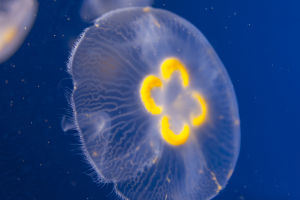When it comes to the animal most similar to humans on Earth, many people would think of chimpanzees, or a broader category, primates.
However, a team of scientists from the University of Hull in the UK has recently discovered an interesting fact after nearly a decade of research: dolphins surprisingly possess personality traits similar to humans.
Dolphins are mammals that live in water, with highly developed brains capable of complex social communication, learning, memory, problem-solving, and tool use and are considered one of the smartest animals on Earth.
"Marine mammals" with social traits
Although they are marine animals, dolphins' ancestors were terrestrial animals. Like humans, they are also mammals. Unlike primates, dolphins are very similar to humans in terms of sociability and personality traits.
The researchers even found it intriguing that dolphins name each other, as according to human understanding, it seems that only humans can give names to others and use them to address each other. However, dolphins also do this. They exchange names, and even if they haven't seen each other for a long time, they can still call each other's names.
Some friends might wonder how dolphins, who don't speak, can call each other by name. This is because they use distinct whistle-like calls to differentiate whether a dolphin is familiar and call each other's names.
This is the first time scientists have observed such complex communication outside of humans.
Prototype of sonar
Did you know that numerous detection techniques appear ineffective when observing and measuring underwater, particularly in the more intricate depths of the ocean in comparison to land?
For example, light has limited penetration ability in water, so even in the clearest seawater, people can only see objects within a dozen to several dozen meters; ordinary electromagnetic waves also decay rapidly in water, and the shorter the wavelength, the greater the loss. Even using high-power low-frequency electromagnetic waves, it can only propagate tens of meters.
Because seawater is rich in electrolytes, it contains many positive and negative ions. This acts as a conductive medium, which shields electromagnetic waves. Most of the energy of electromagnetic waves quickly dissipates in eddy current form.
However, sound waves are mechanical waves; simply put, when sound propagates in water, it compresses a portion of the water, which then pushes another portion of the water, and so on. Therefore, the propagation of sound waves is not affected by electromagnetic fields, making sound waves an effective carrier for underwater information transmission.
Scientists have discovered through research that dolphins may have discovered tens of thousands of years ago that the loss of sound waves propagating in water is much smaller than that of light and other electromagnetic waves. So, they chose to use high-frequency sound waves to convey information. When dolphins swim underwater, they push air back and forth in their airways, causing high-frequency vibrations of the respiratory hole cover and valve structures.
With the help of resonant chambers, these vibrations are amplified to produce high-frequency sound waves. Unlike humans, dolphins don't "speak" with their mouths; instead, these high-frequency sound waves are emitted through their foreheads.
Of course, dolphins' way of receiving signals is also different from humans; they only receive low-frequency sound waves through their ears, and the forehead is where they receive high-frequency sound waves. Based on this complex "sonar" system, dolphins can ensure that this information does not get lost in the ocean's vastness.
Intelligence testing of dolphins
To better understand the intelligence level and characteristics of dolphins, scientists have designed various experiments and tests to observe and evaluate dolphins' cognitive abilities. These tests involve aspects such as memory, attention, reasoning, judgment, problem-solving, and creativity.
Here are some examples:
1. Dolphins can demonstrate self-awareness through mirror self-recognition, meaning they can recognize that the reflection in the mirror is themselves and not another individual. This ability is possessed by only a few animals, such as humans, chimpanzees, and elephants.
2. Dolphins can understand human gestures and vocal commands and perform corresponding actions or tasks according to the instructions. This ability indicates that dolphins have the capacity for interspecies communication and learning.
3. Dolphins can express their desires or needs through symbolic systems, such as pressing buttons of different colors or shapes to request food or toys. This ability indicates that dolphins have a certain degree of abstract thinking and symbol understanding.
These tests only showcase a fraction of dolphins' intelligence, and there are still many unknown and unexplored areas awaiting scientists to discover and explain.


